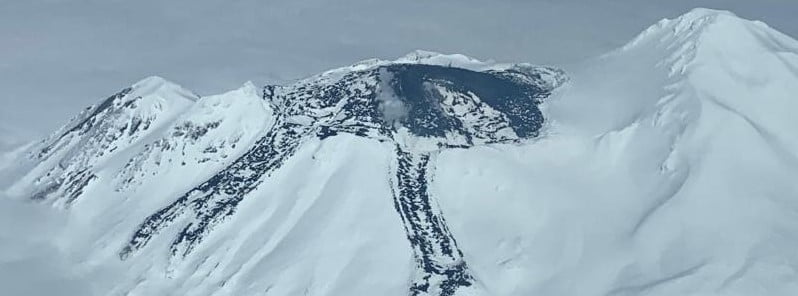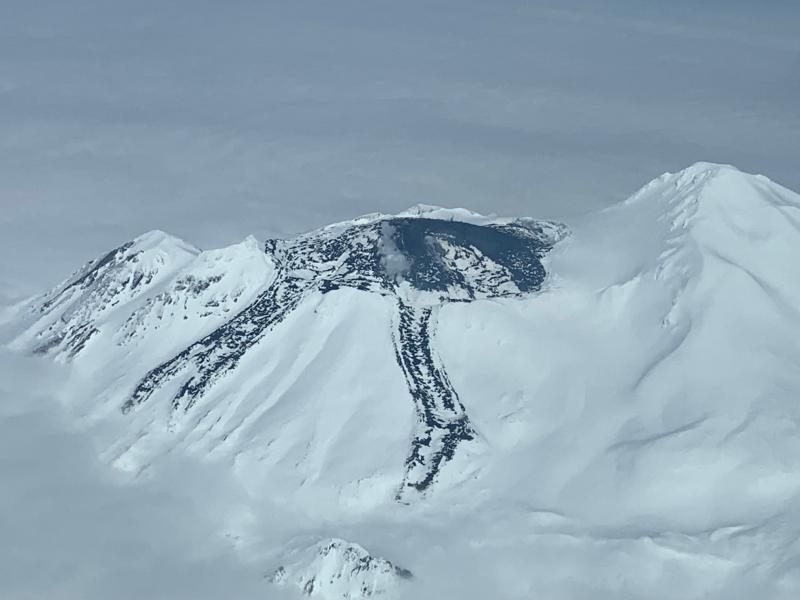Thick lava flow within the summit crater of Great Sitkin volcano, Alaska

Slow eruption of lava continues at Great Sitkin volcano, Alaska, producing a thick lava flow within the summit crater.
While there was no significant earthquake activity detected over the past day, slightly elevated surface temperatures were observed in partly cloudy satellite views, the Alaska Volcano Observatory reported at 20:19 UTC on May 30, 2023.1
A series of low-frequency earthquakes occurred on May 24 but did not result in any observed change in eruptive behavior.
An eruption of lava began at the volcano in July 2021 and has continued to slowly erupt since, but no explosive events have occurred. There was an explosive event in May 2021, before the current eruption of lava.
The Aviation Color Code is at Orange and the Volcano Alert Level is at Watch. This is currently the only Alaskan volcano with Aviation Color Code at Orange.
The volcano is monitored by local seismic and infrasound sensors, satellite data, webcams, and regional infrasound and lightning networks.

Geological summary
Great Sitkin forms much of the northern side of Great Sitkin Island.
A younger parasitic volcano capped by a small, 0.8 x 1.2 km (0.5 – 0.7 miles) ice-filled summit caldera was constructed within a large late-Pleistocene or early Holocene scarp formed by massive edifice failure that truncated an ancestral volcano and produced a submarine debris avalanche.
Deposits from this and an older debris avalanche from a source to the south cover a broad area of the ocean floor north of the volcano. The summit lies along the eastern rim of the younger collapse scarp.
Deposits from an earlier caldera-forming eruption of unknown age cover the flanks of the island to a depth up to 6 m (20 feet). The small younger caldera was partially filled by lava domes emplaced in 1945 and 1974, and five small older flank lava domes, two of which lie on the coastline, were constructed along the northwest- and NNW-trending lines.
Hot springs, mud pots, and fumaroles occur near the head of Big Fox Creek, south of the volcano.
Historical eruptions have been recorded since the late-19th century.2
References:
1 Great Sitkin update – AVO – May 30, 2023
2 Great Sitkin – Geological summary – GVP
Featured image credit: Dave Clum/Alaska Airlines. Acquired on May 20, 2023

Commenting rules and guidelines
We value the thoughts and opinions of our readers and welcome healthy discussions on our website. In order to maintain a respectful and positive community, we ask that all commenters follow these rules.